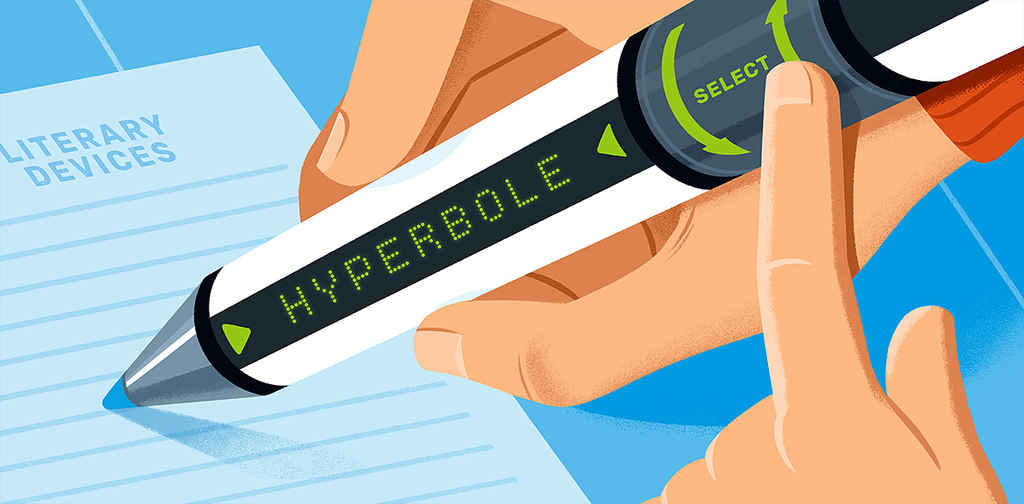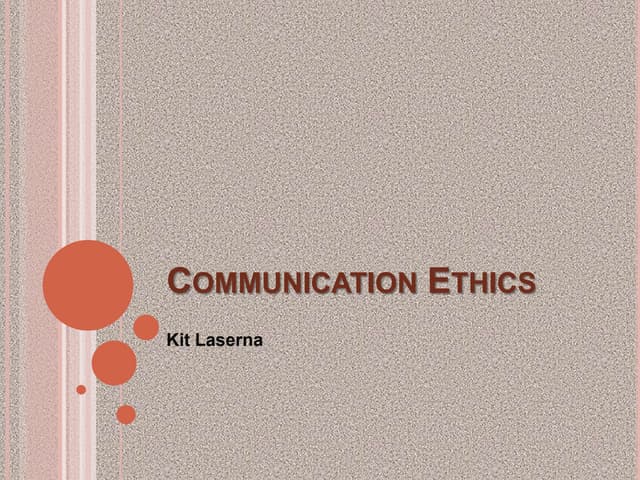Rhetorical Devices in Writing And Speaking (Why to Employ Them?)
Rhetorical devices used in writing and speaking include techniques like metaphors, similes, alliteration, and parallelism. Writers and speakers employ these devices to enhance their message, engage the audience, and make their content more memorable and persuasive.
These devices add depth and creativity to the language, making it more appealing and impactful. By using metaphors and similes, writers and speakers can draw comparisons, making complex concepts easier to understand. Alliteration and parallelism create a rhythmic flow, adding emphasis and enhancing the overall effect.
Rhetorical Devices meaning
Rhetorical devices are linguistic and stylistic techniques used in writing and speaking to persuade, inform, entertain, or engage an audience. These devices are employed by writers and speakers to enhance their communication by creating specific effects, such as emphasizing a point, making language more vivid, or adding depth and complexity to their messages. Rhetorical devices often involve the deliberate use of language, structure, or sound to achieve their desired effect.
Rhetorical devices bring life to the written and spoken word, making it more compelling and effective in capturing the attention and interest of the audience.

Credit: www.thesaurus.com
Rhetorical Devices in Writing And Speaking
Rhetorical devices are techniques that writers and speakers use to enhance their communication and make their messages more persuasive, engaging, or impactful. These devices often manipulate language, structure, or sound to create an effect on the audience. Here are some common rhetorical devices used in writing and speaking:
- Alliteration: This device involves repeating the initial consonant sound in a series of words. For example, “Peter Piper picked a peck of pickled peppers.”
- Anaphora: Anaphora is the repetition of a word or phrase at the beginning of successive clauses or sentences. It can create emphasis and rhythm, as in Martin Luther King Jr.’s “I Have a Dream” speech: “I have a dream that one day… I have a dream that one day… I have a dream that one day…”
- Metaphor: Metaphors make comparisons between two unlike things, often using “is” or “was.” For instance, “The world is a stage.”
- Simile: Similar to metaphors, similes also make comparisons, but they use “like” or “as.” For example, “Her smile was as bright as the sun.”
- Hyperbole: Hyperbole involves exaggerating for emphasis or effect. For instance, “I’ve told you a million times!”
- Personification: Personification attributes human qualities to non-human entities or objects. For example, “The wind whispered through the trees.”
- Irony: Irony involves using language in a way that contrasts with its literal meaning, often to convey a humorous or satirical message.
- Onomatopoeia: This device uses words that imitate the sound they describe, such as “buzz,” “moo,” or “clang.”
- Rhetorical Question: A rhetorical question is asked not to elicit an answer but to make a point or provoke thought. For example, “Are you kidding me?”
- Parallelism: Parallelism involves using similar grammatical structures or patterns for balance and rhythm. It can be seen in sentences like, “She came, she saw, she conquered.”
- Chiasmus: Chiasmus is a reversal in the order of words or phrases in successive clauses. For example, “Ask not what your country can do for you; ask what you can do for your country.”
- Antithesis: Antithesis involves contrasting ideas within a sentence to create a balanced and thought-provoking effect. For example, “It was the best of times; it was the worst of times.”
- Euphemism: Euphemism uses a milder or more indirect word or phrase to replace a harsh or unpleasant one. For instance, “passed away” instead of “died.”
- Cliché: A cliché is an overused expression or phrase that has lost its originality or impact. Writers and speakers sometimes use clichés for familiarity, but they can weaken a message.
- Allusion: Allusion is a brief reference to a person, event, or work of literature, often with deeper symbolic meaning. For example, “He’s a real Romeo with the ladies.”
- Anecdote: Anecdotes are short, personal stories or examples used to illustrate a point or make an idea more relatable.
- Repetition: Repeating words, phrases, or ideas can reinforce a message and make it more memorable.
- Metonymy: Metonymy substitutes one word or phrase with another closely related word. For example, “The White House issued a statement.”
- Synecdoche: Synecdoche uses a part of something to represent the whole or vice versa. For instance, “All hands on deck” refers to all the sailors on a ship.
- Asyndeton and Polysyndeton: Asyndeton involves omitting conjunctions (e.g., “I came, I saw, I conquered”), while polysyndeton uses excessive conjunctions (e.g., “They laughed and talked and danced and sang”).
Effective writers and speakers strategically employ these rhetorical devices to achieve their intended impact, whether it’s to persuade, inform, entertain, or inspire their audience.
The Power Of Rhetorical Devices In Communication
Rhetorical devices, such as metaphor, simile, and hyperbole, are powerful tools that writers and speakers employ to captivate their audience. These devices enhance the effectiveness of communication by adding depth, emotion, and creativity to the message. Employing rhetorical devices keeps the reader or listener engaged while making the content more compelling and memorable.
Effective communication is crucial in both written and spoken forms of discourse. To capture the attention of readers or listeners, writers and speakers often employ rhetorical devices. These devices add depth and persuasion to their words, making their messages more compelling and impactful.
Rhetorical devices enhance communication by enhancing persuasive and influential abilities, as well as connecting with the audience on an emotional level.
Importance Of Rhetorical Devices In Writing And Speaking:
Rhetorical devices serve as powerful tools that writers and speakers can utilize to engage their audience and convey their message effectively. They are essential for several key reasons:
- Enhancing persuasive and influential abilities:
- Repetition: Repeating key phrases or ideas creates a memorable impact and strengthens the overall message.
- Anaphora: Beginning consecutive sentences or clauses with the same word or phrase emphasizes and reinforces the writer’s or speaker’s point.
- Parallelism: Using parallel structure in sentences or phrases provides balance and rhythm, enhancing the overall persuasiveness and influence of the message.
- Connecting with the audience on an emotional level:
- Pathos: Employing emotional appeals stimulates empathy and helps the audience relate to the subject matter on a personal level.
- Metaphors and similes: Comparisons using metaphors and similes evoke vivid imagery, engaging the audience’s senses and emotions.
- Anecdotes: Sharing personal stories or anecdotes helps establish a connection with the audience by appealing to their emotions and experiences.
In conclusion (avoid starting with “in conclusion”), the strategic use of rhetorical devices plays a significant role in effective communication. By employing these devices, writers and speakers can enhance their persuasive abilities and establish a stronger connection with their audience.
Through repetition, anaphora, parallelism, pathos, metaphors, similes, and anecdotes, their messages become more compelling, relatable, and impactful. By recognizing the power of rhetorical devices, both writers and speakers can elevate their communication skills and deliver their messages with greater influence and effectiveness.
Amplifying Language: Rhetorical Devices In Action
Discover the power of rhetorical devices in writing and speaking in “Amplifying Language: Rhetorical Devices in Action. ” This comprehensive list explores the various techniques employed by writers and speakers and delves into the reasons behind their usage. Gain a deeper understanding of how these devices captivate and engage audiences.
Metaphors are powerful rhetorical devices that writers and speakers use to add depth and vividness to their language. By associating one thing with another unrelated thing, metaphors create a stronger impact on the audience’s imagination and emotions. Here are some key points about metaphors:
- Metaphors add depth and vividness to language, making it more engaging and memorable.
- Metaphors are commonly used in literature and speeches to convey abstract ideas in a more concrete and relatable way.
- They draw upon the audience’s existing knowledge and experiences, making it easier for them to understand complex concepts.
- Metaphors evoke emotions and create strong mental images, enhancing the overall impact of the writing or speech.
Similes, like metaphors, play a significant role in amplifying language. They enable writers and speakers to make connections through comparison, making the content more relatable to the audience. Here’s what you need to know about similes:
- Similes are rhetorical devices that compare two things using “like” or “as,” highlighting similarities between them.
- They are particularly effective in descriptive writing, where they help create vivid imagery and engage the reader’s senses.
- Similes allow the audience to visualize abstract concepts by associating them with familiar objects or experiences.
- By evoking sensory details, similes connect with the audience on a more personal level, enhancing their understanding and engagement.
Another rhetorical device that writers and speakers employ is anaphora. Anaphora involves repeating a word or phrase at the beginning of multiple clauses or sentences, emphasizing its importance and creating a rhythmic effect. Here’s why anaphora is valuable:
- Anaphora is an effective way to emphasize key ideas or arguments in both writing and speaking.
- By repeating certain words or phrases, writers and speakers can create a sense of coherence and structure in their content.
- Anaphora adds rhythm and musicality to speeches, making them more engaging and impactful.
- Through repetition, anaphora can evoke strong emotions in the audience, leaving a lasting impression on their minds.
Rhetorical devices such as metaphors, similes, and anaphora play a vital role in amplifying language in writing and speaking. They add depth, vividness, and emotional impact to the content, making it more engaging, relatable, and memorable for the audience. Whether used in literature or speeches, these rhetorical devices enhance comprehension and foster a stronger connection between the writer or speaker and their audience.
Eliciting Emotions: Appeal To Pathos
Appeal to Pathos is a rhetorical device commonly used by writers and speakers to evoke emotions in their audience. By tapping into the reader’s or listener’s emotions, they can create a deeper connection and inspire action. Employing pathos allows writers and speakers to make their message more relatable and persuasive, enhancing the overall impact of their work.
Personification: Giving Life To Inanimate Objects
- Using personification is a rhetorical device where writers and speakers attribute human characteristics to inanimate objects or abstract concepts.
- This figurative language technique helps capture the attention of the audience by creating a relatable and emotional connection to otherwise non-living entities.
Eliciting Empathy And Emotions Through Personification
- Personification evokes emotions and empathy, helping the audience relate on a deeper level.
- By attributing human qualities to inanimate objects, writers and speakers make the audience feel a sense of connection and understanding.
Humanizing Concepts For Better Audience Connection
- Personification humanizes abstract concepts, making complex ideas more accessible and relatable.
- This helps bridge the gap between the audience’s experiences and the topic being discussed, increasing engagement and understanding.
Hyperbole: Exaggeration For Emphasis
- Hyperbole is a rhetorical device that uses exaggerated statements or claims for emphasis.
- By stretching the truth, writers and speakers captivate their audience’s attention, making the message more memorable and impactful.
Adding Humor, Emphasis, And Drama To Communication
- Hyperbole adds humor, emphasis, and drama to communication, entertaining the audience and making the message more engaging.
- This rhetorical device helps create a strong emotional response, whether it be laughter, shock, or awe, ensuring that the message leaves a lasting impression.
Creating Memorable Experiences For The Audience
- Hyperbole heightens the impact of the message, making it stand out in the audience’s mind.
- By creating exaggerated scenarios or descriptions, writers and speakers craft memorable experiences for the audience, making them more likely to remember and share the content.
Emotional Appeals: Engaging Through Sentiment
- Emotional appeals involve using language and storytelling techniques that elicit specific emotions in the audience.
- By appealing to the audience’s emotions, writers and speakers can establish a stronger connection, increasing engagement and influencing their audience’s opinions or actions.
Utilizing Emotions To Connect With The Audience
- Emotional appeals tap into the audience’s emotions, making them feel more connected and invested in the message being conveyed.
- By understanding and addressing the audience’s emotional needs, writers and speakers create a powerful bond that strengthens the impact of their communication.
Strengthening Arguments And Encouraging Action
- Emotional appeals strengthen arguments by engaging the audience’s emotions, making them more receptive and supportive of the message.
- By creating an emotional connection, writers and speakers encourage the audience to take action, whether it’s changing their behavior, supporting a cause, or advocating for a particular viewpoint.
By employing rhetorical devices such as personification, hyperbole, and emotional appeals, writers and speakers evoke emotions, create engaging experiences, and connect with their audience on a deeper level. These devices add color, depth, and impact to communication, leaving a lasting impression and encouraging action.
Whether it’s humanizing concepts, exaggerating for emphasis, or appealing to sentiment, these rhetorical devices play a crucial role in effective writing and speaking.
Building Credibility: Appeal To Ethos
Appealing to ethos involves the use of rhetorical devices in writing and speaking to build credibility. Writers and speakers employ these devices to establish trust and credibility with their audience, reinforcing their expertise and knowledge. They use devices such as personal anecdotes, expert opinions, and statistical data to support their claims and persuade their audience.
Rhetorical questions: Engaging the audience’s thoughts:
- Why do we believe experts?
- How can we determine someone’s credibility?
Bullet points:
- Encouraging critical thinking and reflection: Writers and speakers use rhetorical questions to provoke the audience’s thoughts and get them actively engaged in the topic. By posing questions that challenge their assumptions or prompt them to analyze the subject matter, rhetorical questions encourage critical thinking and reflection.
- Establishing the speaker or writer’s expertise: Rhetorical questions can be used to subtly highlight the speaker or writer’s knowledge and expertise on the subject. By asking questions that only someone well-versed in the topic would be able to answer, the speaker or writer builds credibility and establishes themselves as an authority.
Expert testimonies: Leveraging authority and credibility:
- How can expert testimonies enhance the writer’s or speaker’s message?
- Why are expert opinions valued in persuasive communication?
Bullet points:
- Quoting professionals and experts: Employing expert testimonies involves quoting the opinions, experiences, or research findings of recognized authorities in the field. By including these expert opinions, a writer or speaker leverages the authority and credibility associated with these experts, persuading the audience to trust their message.
- Strengthening arguments and persuading the audience: Expert testimonies help strengthen arguments by providing evidence and support for the writer’s or speaker’s claims. By referencing the expertise and knowledge of reputable professionals, the writer or speaker convinces the audience of the validity and persuasiveness of their argument.
Statistical evidence: Conveying trustworthiness:
- How can statistical evidence enhance the credibility of a writer or speaker?
- Why do numbers and data lend credibility to claims?
Bullet points:
- Using data and statistics to support claims: Statistical evidence involves the use of numerical data to back up the writer’s or speaker’s statements. By relying on concrete figures, percentages, or quantitative findings, the writer or speaker provides objective and verifiable support for their arguments, which enhances their credibility.
- Enhancing credibility and persuasiveness: Numbers and data have a powerful impact on the audience’s perception of credibility. By incorporating statistical evidence in their writing or speaking, the writer or speaker conveys trustworthiness, demonstrating thorough research and a reliance on facts rather than mere opinions. This enhances the persuasiveness of their message.
Writers and speakers employ various rhetorical devices to build credibility and appeal to ethos. Rhetorical questions engage the audience’s thoughts, encourage critical thinking, and establish the speaker or writer’s expertise. Expert testimonies leverage authority and credibility by quoting respected professionals, while statistical evidence conveys trustworthiness through the use of data and statistics.
By utilizing these devices, writers and speakers enhance their arguments, strengthen their message, and ultimately persuade their audience.
Developing Logical Arguments: Appeal To Logos
Rhetorical devices, such as logical arguments and appeals to logos, are commonly employed by writers and speakers to enhance their communication. These devices help to establish credibility, provide evidence, and convince the audience through logical reasoning, making the content more persuasive and engaging.
Parallelism: Emphasizing Through Balanced Structure
- Using parallelism in writing and speaking helps emphasize certain points by structuring them in a balanced and repetitive manner.
- It creates symmetry and clarity, making it easier for the audience to follow along and understand the logical progression of ideas.
- By maintaining a consistent structure, parallelism simplifies complex ideas, aiding in better comprehension.
Repetition: Reinforcing Key Points
- Repetition is a rhetorical device that writers and speakers use to reinforce their key points.
- By repeating certain words or phrases throughout their work, they enhance comprehension and ensure that the main ideas are understood and remembered by the audience.
- This device increases memorability and impact, leaving a lasting impression on the readers or listeners.
Analogy: Making Complex Ideas Relatable
- Analogies are powerful tools employed by writers and speakers to make complex ideas more relatable and understandable.
- By drawing parallels with familiar concepts, analogies help the audience connect with the message and grasp abstract or unfamiliar ideas more easily.
- Simplifying abstract concepts through analogies facilitates better comprehension and engagement with the audience.
Writers and speakers utilize rhetorical devices to develop logical arguments that appeal to logos. Parallelism is used to emphasize points and create symmetry, while repetition reinforces key ideas. Analogy is employed to make complex ideas relatable and simplify abstract concepts.
By employing these devices, writers and speakers enhance comprehension, increase memorability, and effectively convey their messages to the audience.
Frequently Asked Questions
What Are Some Common Rhetorical Devices Used In Writing And Speaking?
Rhetorical devices such as simile, metaphor, and alliteration are often employed to make language more persuasive, engaging, and memorable. These devices help to grab the reader’s attention, create vivid imagery, and emphasize key points, making the message more impactful and effective.
Why Do Writers And Speakers Use Rhetorical Devices?
Writers and speakers use rhetorical devices to enhance their communication and influence their audience. These devices add flair and creativity to their writing, making it more interesting and engaging. By employing rhetorical devices, writers and speakers can appeal to emotions, provoke thought, and effectively convey their message, making it more persuasive and memorable.
How Do Rhetorical Devices Benefit The Audience?
Rhetorical devices benefit the audience by making the content more engaging and memorable. These devices grab the reader’s attention and create a connection, allowing the audience to better understand and remember the message being conveyed. By employing rhetorical devices, writers and speakers can effectively communicate their ideas, leaving a lasting impact on the audience.
Conclusion
To effectively engage and persuade their audience, writers and speakers employ various rhetorical devices. These devices, including metaphors, similes, alliteration, and hyperbole, enhance the overall impact and appeal of the message being conveyed. By incorporating these rhetorical devices into their writing and speaking, communicators have the power to evoke emotion, create vivid imagery, and make their points more memorable.
Rhetorical devices serve several important purposes. Firstly, they can captivate the reader’s or listener’s attention, drawing them into the content and keeping them engaged. Secondly, these devices help to clarify complex ideas and concepts, making them more accessible and easier to comprehend.
By using rhetorical devices, writers and speakers can also emphasize key points, persuading their audience to adopt a particular viewpoint or take a desired course of action. The use of rhetorical devices in writing and speaking is a powerful tool that enables communicators to effectively communicate their message, captivate their audience, and leave a lasting impact.
Whether it’s a persuasive essay, a speech, or any form of communication, employing rhetorical devices can elevate the content and make it more compelling and memorable.




